 Search by Keyword
Sign Up Below for our MONTHLY BEATLES TRIVIA QUIZ!
|
“IT’S ONLY LOVE”
(John Lennon – Paul McCartney)
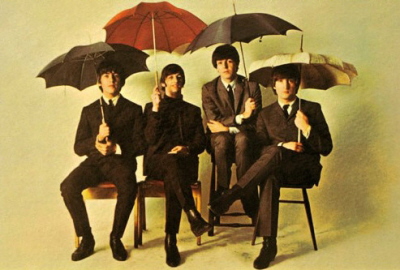 The love for Beatles music appears to be universal. Every generation sparks a big new crop of enthusiasts who discover the irresistible charm and versatility of the fab four. Every one of these beatlemaniacs will be glad to inform you which is their favorite album and song and explain the reason why. There is almost no Beatles song that isn’t a favorite of someone and opinions (and debates) fly as to why a particular song has special meaning for them. The love for Beatles music appears to be universal. Every generation sparks a big new crop of enthusiasts who discover the irresistible charm and versatility of the fab four. Every one of these beatlemaniacs will be glad to inform you which is their favorite album and song and explain the reason why. There is almost no Beatles song that isn’t a favorite of someone and opinions (and debates) fly as to why a particular song has special meaning for them.
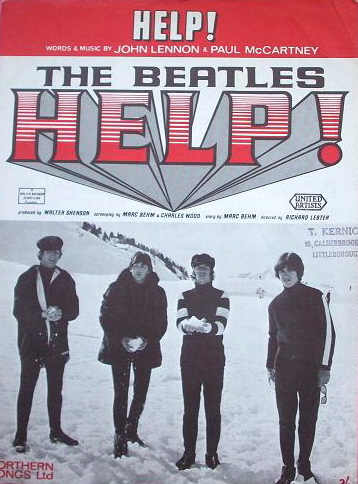 The Beatles themselves have also expressed their personal opinions about most of their songs and revealed which are their favorites. John Lennon, for instance, consistently favored “Help!,” “In My Life,” “Here There And Everywhere” and “Strawberry Fields Forever” among his favorites. The Beatles themselves have also expressed their personal opinions about most of their songs and revealed which are their favorites. John Lennon, for instance, consistently favored “Help!,” “In My Life,” “Here There And Everywhere” and “Strawberry Fields Forever” among his favorites.
However, most fans are dumbfounded when they read of the group's critical analysis of some of their own music. One case in point is the song “It’s Only Love,” which many enthusiasts view as a beautifully written but underrated hidden gem on the “Help!” album (or US “Rubber Soul” album). What does John Lennon, it's primary writer, have to say about this track?
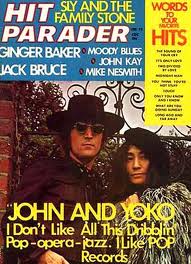 In 1969, he stated, “I was always ashamed of that because of the abominable lyrics.” In 1972, he told Hit Parader magazine, “That’s the one song I really hate of mine. Terrible lyric!” And in his Playboy magazine interview in 1980, “I always thought it was a lousy song. The lyrics are abysmal. I always hated it!” In 1969, he stated, “I was always ashamed of that because of the abominable lyrics.” In 1972, he told Hit Parader magazine, “That’s the one song I really hate of mine. Terrible lyric!” And in his Playboy magazine interview in 1980, “I always thought it was a lousy song. The lyrics are abysmal. I always hated it!”
Before this begins to influence your opinion of the song, we also need to remember that The Beatles themselves were not necessarily ‘Beatles fans.’ When asked by a reporter in 1966 the question “Would you be a Beatles fan if you weren’t a Beatle?” John’s immediate answer was “No!” When asked the question “What do you think about your music?” Paul honestly responded with “I like it. It’s not the best, but it’s OK.”
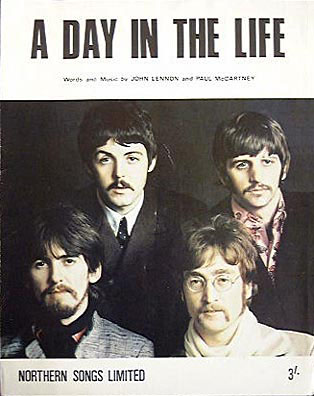 The popular phase that comes to mind, and one we need to remember here, is the often quoted and repeated line “I’m my own worst critic.” John was allowed to approve or disapprove of something that he wrote just as much as we’re allowed to have whatever opinion we want to have on this same song. The truth of the matter is that, while “It’s Only Love” may not place in the same category as “Yesterday” or “A Day In The Life,” it remains a finely constructed and beautifully delivered piece of work. The popular phase that comes to mind, and one we need to remember here, is the often quoted and repeated line “I’m my own worst critic.” John was allowed to approve or disapprove of something that he wrote just as much as we’re allowed to have whatever opinion we want to have on this same song. The truth of the matter is that, while “It’s Only Love” may not place in the same category as “Yesterday” or “A Day In The Life,” it remains a finely constructed and beautifully delivered piece of work.
 John's Kenwood home
|
Songwriting History
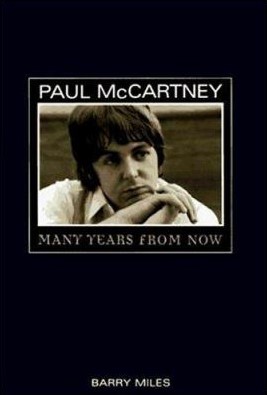 With the filming of their second movie “Help!” wrapped up by mid May of 1965, The Beatles had a little time on their hands to compose material to complete the second side of their upcoming album, the first side and more being recorded earlier that year. Without much on their schedule besides resting and vacations, Paul met with John at Kenwood, John’s home in Weybridge, Surrey, sometime during late May and early June for a writing session that resulted in “It’s Only Love.” With the filming of their second movie “Help!” wrapped up by mid May of 1965, The Beatles had a little time on their hands to compose material to complete the second side of their upcoming album, the first side and more being recorded earlier that year. Without much on their schedule besides resting and vacations, Paul met with John at Kenwood, John’s home in Weybridge, Surrey, sometime during late May and early June for a writing session that resulted in “It’s Only Love.”
According to Barry Miles in his book “Many Years From Now,” The song was “John’s original idea and Paul helped him finish it. Paul puts it as 60/40 to John.” Paul himself adds, “Sometimes we didn’t fight it if the lyric came out rather bland on some of those filler songs like ‘It’s Only Love.’ If a lyric was really bad we’d edit it, but we weren’t that fussy about it, because, it’s only a rock ‘n’ roll song. I mean, this is not literature.”
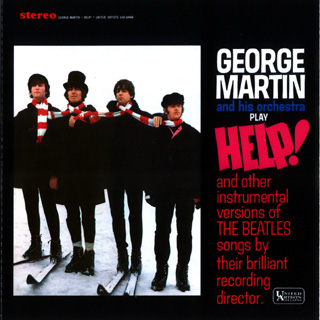 As proof of them only considering this song as “filler” for the album, they gave the song the working title “That’s A Nice Hat” which, of course, has nothing at all to do with the lyrics of the song. When George Martin recorded and released his album of instrumental renditions from the “Help!” album, the US pressings used this working title for the song, precisely calling it “That’s A Nice Hat (Cap).” As proof of them only considering this song as “filler” for the album, they gave the song the working title “That’s A Nice Hat” which, of course, has nothing at all to do with the lyrics of the song. When George Martin recorded and released his album of instrumental renditions from the “Help!” album, the US pressings used this working title for the song, precisely calling it “That’s A Nice Hat (Cap).”
Recording History
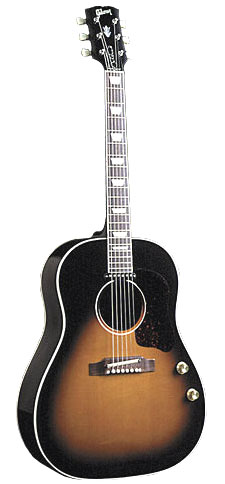 There were a total of twelve days of recording sessions that were utilized to complete the entire British “Help!” album. With February 15th, 1965 being the first date of recording, June 15th of that year saw the eleventh day of recording for the album, this being a three hour session devoted to the new composition “It’s Only Love.” There were a total of twelve days of recording sessions that were utilized to complete the entire British “Help!” album. With February 15th, 1965 being the first date of recording, June 15th of that year saw the eleventh day of recording for the album, this being a three hour session devoted to the new composition “It’s Only Love.”
The Beatles entered EMI Studio Two at 2:30 pm and, after a short time of rehearsals, ran through six takes of the rhythm track. The instrumentation comprised both John and George playing acoustic guitars, Paul on bass and Ringo on drums while John sang lead vocals. Takes one and two were complete versions but weren’t deemed good enough, although "take two," as can be heard on the album “Anthology 2,” appeared flawless.
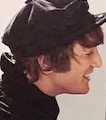 "Take three" lasted no more than one second as it was simply an acoustic guitar flub by John followed by a chuckle (as also heard on “Anthology 2”). "Take four" was complete but unsuitable, while "take five" broke down because of a mistake by Ringo. “We all make mistakes…” he is heard to say on tape. Finally, "take six" is decided to be the best and is spooled back for overdubs. "Take three" lasted no more than one second as it was simply an acoustic guitar flub by John followed by a chuckle (as also heard on “Anthology 2”). "Take four" was complete but unsuitable, while "take five" broke down because of a mistake by Ringo. “We all make mistakes…” he is heard to say on tape. Finally, "take six" is decided to be the best and is spooled back for overdubs.
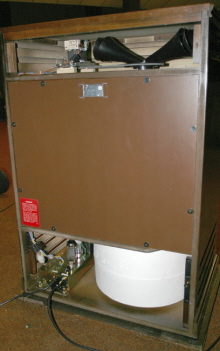 George Harrison overdubs the characteristic lead guitar phrases throughout the song as well as some ad-libbed picking at strategic spots in the verses. The lead guitar phrases are played through a rotating Leslie speaker cabinet as usually used for a Hammond organ, which give it a unique warbling effect. This experimentation continued throughout The Beatles studio years as they recorded quite a number of instruments using this effect, even vocals (as on “Tomorrow Never Knows”). George Harrison overdubs the characteristic lead guitar phrases throughout the song as well as some ad-libbed picking at strategic spots in the verses. The lead guitar phrases are played through a rotating Leslie speaker cabinet as usually used for a Hammond organ, which give it a unique warbling effect. This experimentation continued throughout The Beatles studio years as they recorded quite a number of instruments using this effect, even vocals (as on “Tomorrow Never Knows”).
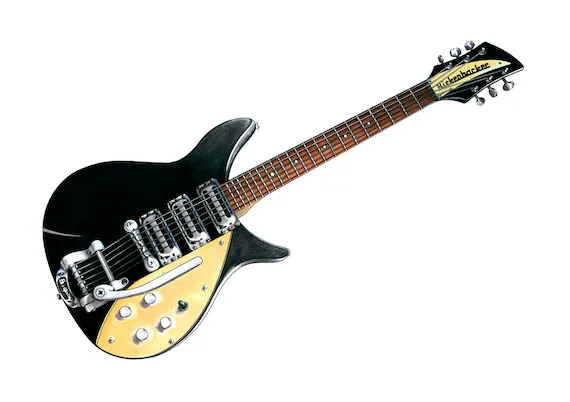 Other overdubs include John playing a "chopping" staccato rhythm on his black Rickenbacker 325 electric guitar in the verses, Ringo on tambourine during the choruses, and John double-tracking his vocals during the choruses, the last two of these overdubs appearing on the same track of the four-track tape. By 5:30 pm, the song was complete. Other overdubs include John playing a "chopping" staccato rhythm on his black Rickenbacker 325 electric guitar in the verses, Ringo on tambourine during the choruses, and John double-tracking his vocals during the choruses, the last two of these overdubs appearing on the same track of the four-track tape. By 5:30 pm, the song was complete.
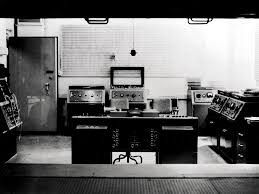 On June 18th, 1965, both the mono and stereo mixes of the song were made. This was done in the control room of EMI Studio Two by George Martin and engineers Norman Smith and Phil McDonald. The stereo mix created on this day basically has the rhythm track on the left channel with the lead vocals, which were isolated on its own track, centered in the mix. Therefore, all of the overdubs appear exclusively on the right channel. On June 18th, 1965, both the mono and stereo mixes of the song were made. This was done in the control room of EMI Studio Two by George Martin and engineers Norman Smith and Phil McDonald. The stereo mix created on this day basically has the rhythm track on the left channel with the lead vocals, which were isolated on its own track, centered in the mix. Therefore, all of the overdubs appear exclusively on the right channel.
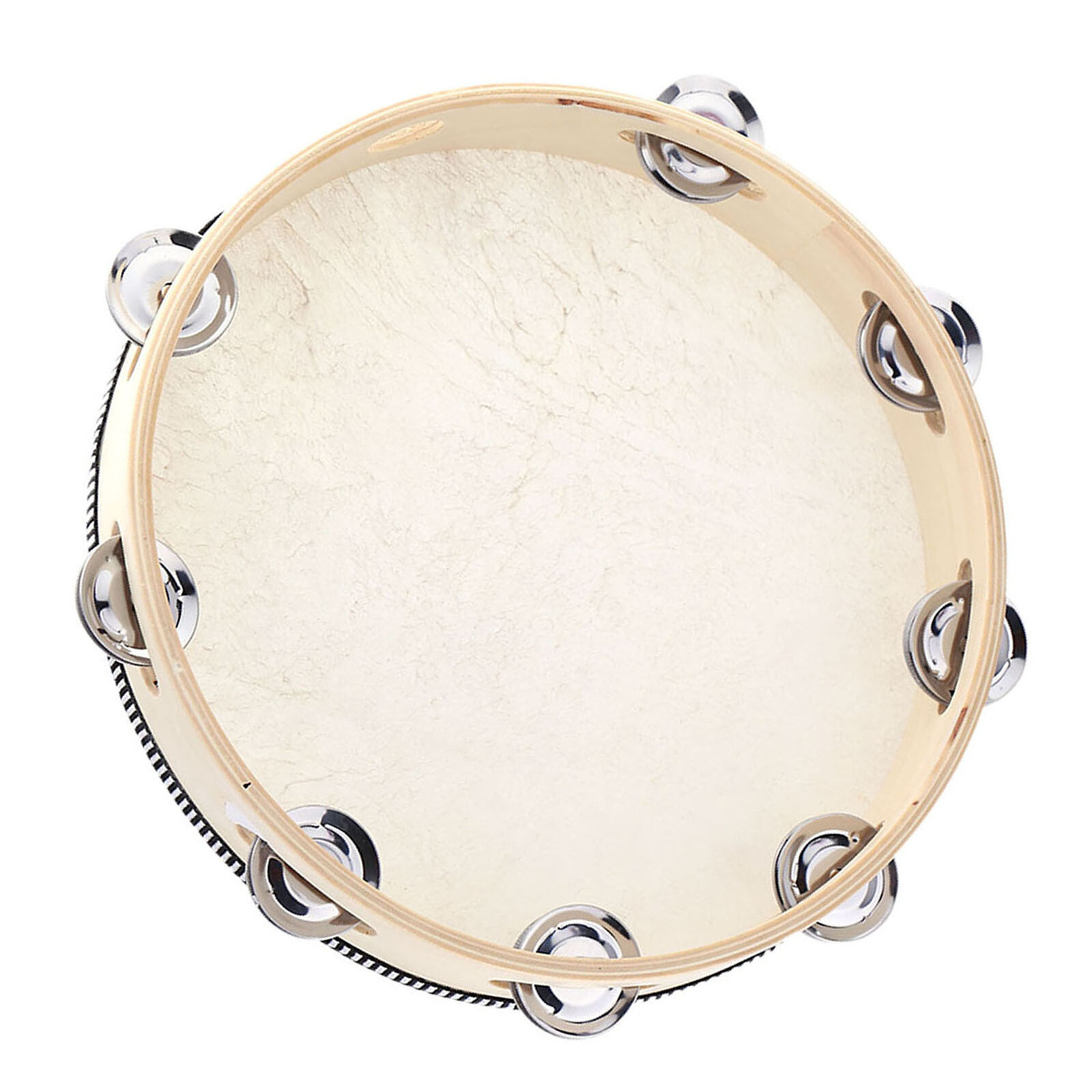 One thing that was noticed at this stage was that John’s vocal double-tracking during the choruses was quite off at times, especially in the fourth measure of the first chorus on the word “only.” To remedy the problem, the EMI staff cut out the track with John’s double-tracked vocals while this word was being sung on both the mono and stereo mixes. The only problem was that Ringo’s tambourine was also missing for this short time as well, but they apparently figured no one would notice. Another executive decision was made for both mixes, that being to fade out the same track at the end of the song when John’s vocals end. This resulted in the same problem of Ringo’s tambourine disappearing for the last four measures of the song. Nonetheless, this is how we all heard the song in the '60s. One thing that was noticed at this stage was that John’s vocal double-tracking during the choruses was quite off at times, especially in the fourth measure of the first chorus on the word “only.” To remedy the problem, the EMI staff cut out the track with John’s double-tracked vocals while this word was being sung on both the mono and stereo mixes. The only problem was that Ringo’s tambourine was also missing for this short time as well, but they apparently figured no one would notice. Another executive decision was made for both mixes, that being to fade out the same track at the end of the song when John’s vocals end. This resulted in the same problem of Ringo’s tambourine disappearing for the last four measures of the song. Nonetheless, this is how we all heard the song in the '60s.
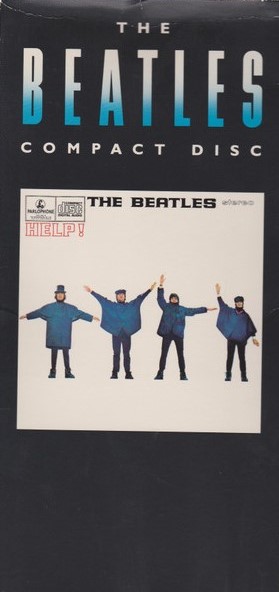 However, in 1986, George Martin pulled out the master tapes of the entire “Help!” album to create new stereo mixes for its debut on compact disc. There are noticeable differences between the new and old mixes, one being that there is a slight panning of the left and right channels which result in a little presence of the rhythm track in the right channel and the overdubs in the left channel. The obvious difference, though, is that George Martin left John’s second vocal track intact, which allows us to hear the out-of-sync word “only” that the EMI staff were trying to hide in 1965. They also left the track up until the end of the song, which allows Ringo’s tambourine to finish up the song with the rest of the instrumentation. However, in 1986, George Martin pulled out the master tapes of the entire “Help!” album to create new stereo mixes for its debut on compact disc. There are noticeable differences between the new and old mixes, one being that there is a slight panning of the left and right channels which result in a little presence of the rhythm track in the right channel and the overdubs in the left channel. The obvious difference, though, is that George Martin left John’s second vocal track intact, which allows us to hear the out-of-sync word “only” that the EMI staff were trying to hide in 1965. They also left the track up until the end of the song, which allows Ringo’s tambourine to finish up the song with the rest of the instrumentation.
Song Structure and Style
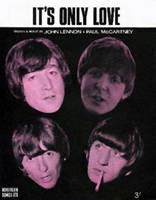 When analyzed, we see their uncommon use of the chorus on “It’s Only Love,” something that was used only sparingly in the early Beatles catalog (such as on “It Won’t Be Long”) and came into prominence in their later years (such as on “Ob-La-Di, Ob-La Da”). The short format used on this song also contains a bridge between the verses and choruses, which is also rather new ground. As a whole, the structure consists of ‘verse/ bridge/ chorus/ verse/ bridge/ chorus’ (or abcabc) with a brief intro and conclusion thrown in for good measure. No solo or instrumental section was included, although it would have served nicely to extend the song past the two minute mark if the mood would have struck them. It didn’t. When analyzed, we see their uncommon use of the chorus on “It’s Only Love,” something that was used only sparingly in the early Beatles catalog (such as on “It Won’t Be Long”) and came into prominence in their later years (such as on “Ob-La-Di, Ob-La Da”). The short format used on this song also contains a bridge between the verses and choruses, which is also rather new ground. As a whole, the structure consists of ‘verse/ bridge/ chorus/ verse/ bridge/ chorus’ (or abcabc) with a brief intro and conclusion thrown in for good measure. No solo or instrumental section was included, although it would have served nicely to extend the song past the two minute mark if the mood would have struck them. It didn’t.
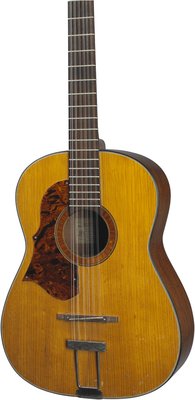 The four-measure introduction is for guitars only, two acoustics primarily in the left channel (John on his Framus "Hootenanny" 12-string for the first two measures, then joined by George on his Gibson "Jumbo" 6-string played high up on the neck for the last two measures) and one electric played through the rotating Leslie speaker cabinet primarily in the right channel. The two jangly chords are played twice while the lead guitar passage is also repeated. The four-measure introduction is for guitars only, two acoustics primarily in the left channel (John on his Framus "Hootenanny" 12-string for the first two measures, then joined by George on his Gibson "Jumbo" 6-string played high up on the neck for the last two measures) and one electric played through the rotating Leslie speaker cabinet primarily in the right channel. The two jangly chords are played twice while the lead guitar passage is also repeated.
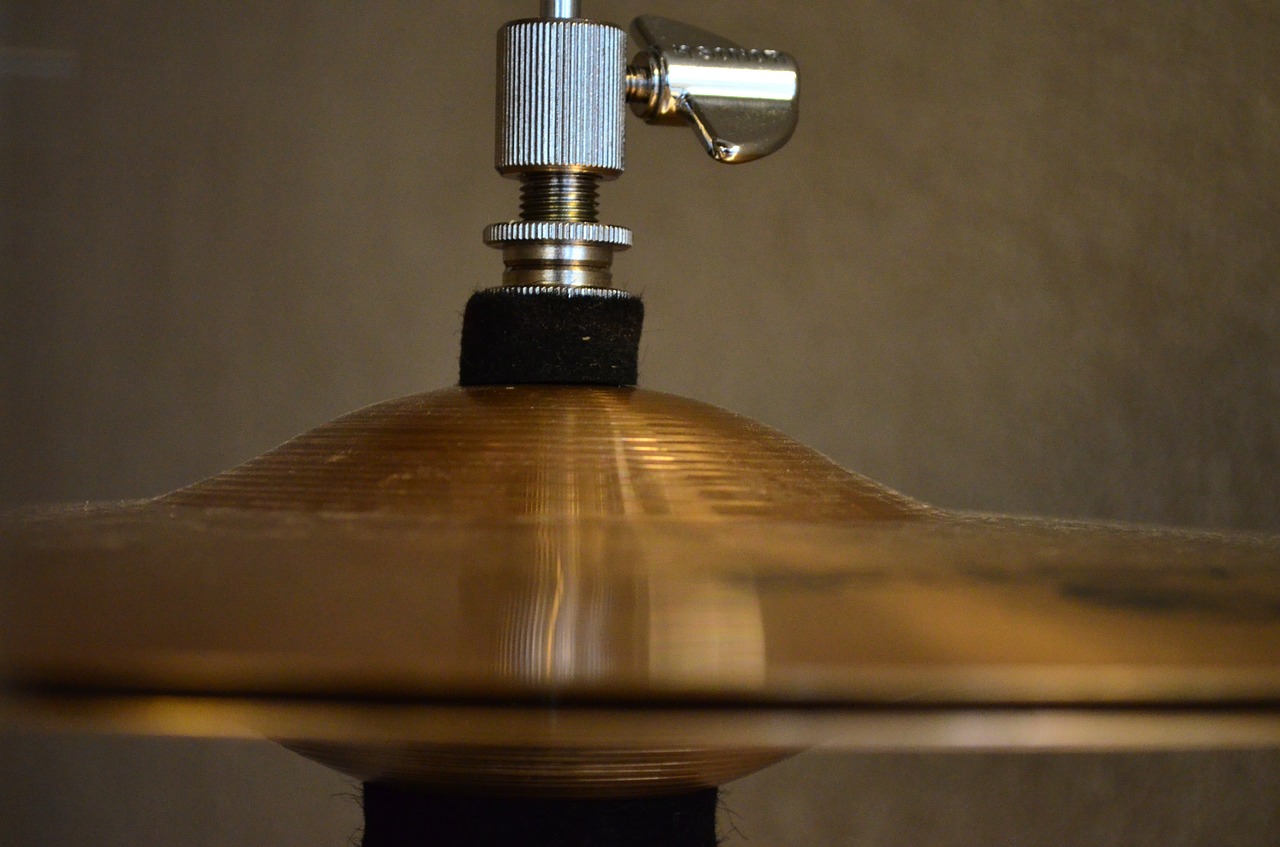 The first eight-measure verse then begins with bass, drums and vocals kicking in directly on the downbeat. Ringo plays an inventive Latin-style drum part with rim shots and accents on his closed hi-hat and stays comfortably in this rhythm for the entire song. John’s descending single-tracked vocal melody line begins with a throat that definitely needs to be cleared but, after some time being spent already getting the rhythm track down, is deemed "good enough." (Some sources suspect that there is a flaw in the tape which resulted in John’s first three words sounding the way they do. However, this was a common occurrence in John’s vocal delivery as can be heard in songs such as “Baby You’re A Rich Man” and even “A Day In The Life.”) The first eight-measure verse then begins with bass, drums and vocals kicking in directly on the downbeat. Ringo plays an inventive Latin-style drum part with rim shots and accents on his closed hi-hat and stays comfortably in this rhythm for the entire song. John’s descending single-tracked vocal melody line begins with a throat that definitely needs to be cleared but, after some time being spent already getting the rhythm track down, is deemed "good enough." (Some sources suspect that there is a flaw in the tape which resulted in John’s first three words sounding the way they do. However, this was a common occurrence in John’s vocal delivery as can be heard in songs such as “Baby You’re A Rich Man” and even “A Day In The Life.”)
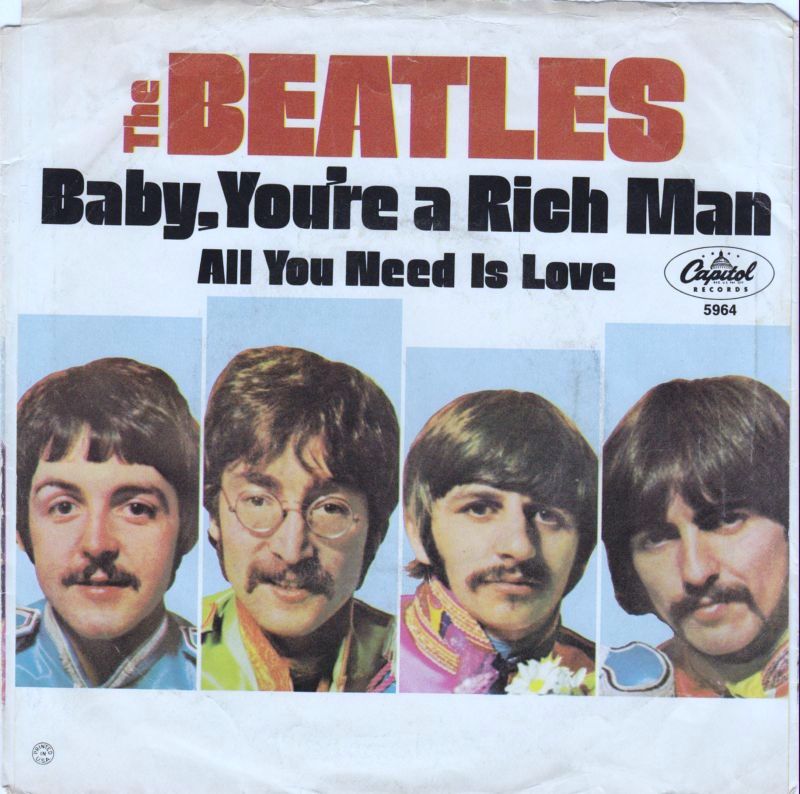 John’s overdubbed electric rhythm guitar appears in the right channel during the verse, which plays a syncopated Latin-sounding rhythm throughout. One further ingredient is George’s accenting guitar lines in the third and seventh measures, which appear to be ad-libbed. The same instrumentation continues during the four-measure bridge that follows except for the reoccurrence of the introductory guitar passage through the Leslie speaker in the third and fourth measures. John’s overdubbed electric rhythm guitar appears in the right channel during the verse, which plays a syncopated Latin-sounding rhythm throughout. One further ingredient is George’s accenting guitar lines in the third and seventh measures, which appear to be ad-libbed. The same instrumentation continues during the four-measure bridge that follows except for the reoccurrence of the introductory guitar passage through the Leslie speaker in the third and fourth measures.
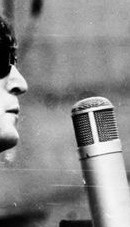 The bridge ends with John’s double-tracked vocals coming in on the fourth measure with the words “It’s only…” One would expect the following eight-measure chorus to begin in the home key of C but they surprise us by jumping into B flat to take the song to a noticeably higher level. Ringo’s overdubbed tambourine is added to the mix for the chorus, but the absence of Lennon’s accented electric guitar is not as noticeable. George puts in another appearance as lead guitarist with a further repeat of the guitar passage in the third and fourth measures of the chorus. The bridge ends with John’s double-tracked vocals coming in on the fourth measure with the words “It’s only…” One would expect the following eight-measure chorus to begin in the home key of C but they surprise us by jumping into B flat to take the song to a noticeably higher level. Ringo’s overdubbed tambourine is added to the mix for the chorus, but the absence of Lennon’s accented electric guitar is not as noticeable. George puts in another appearance as lead guitarist with a further repeat of the guitar passage in the third and fourth measures of the chorus.
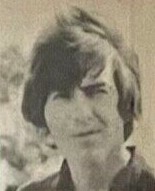 The exact pattern of ‘verse/ bridge/ chorus’ is then repeated with the same instrumentation. Two interesting anomalies are included in this verse, one being John’s comical reading on the word “brrrright” in the seventh measure (followed by a slight chuckle in the following line “very bright”) and then George’s fumbling guitar licks in measures seven and eight. The exact pattern of ‘verse/ bridge/ chorus’ is then repeated with the same instrumentation. Two interesting anomalies are included in this verse, one being John’s comical reading on the word “brrrright” in the seventh measure (followed by a slight chuckle in the following line “very bright”) and then George’s fumbling guitar licks in measures seven and eight.
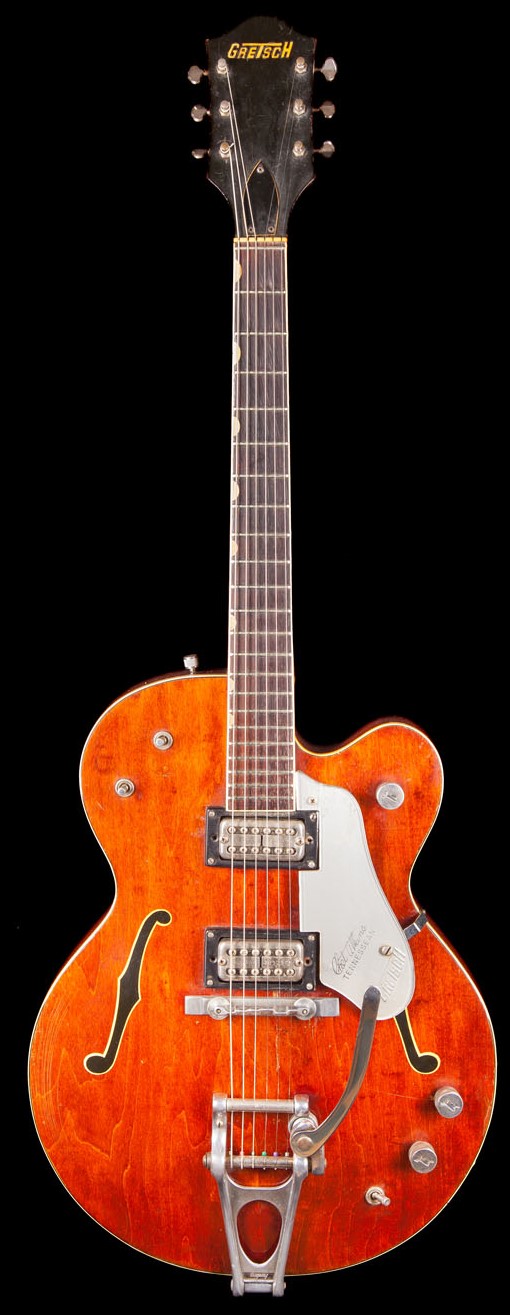 This second chorus is actually extended by two measures by repeating the last phrase “it’s so hard loving you” for emphasis. This is immediately followed by a seven-measure conclusion which is an extended repeat of the introduction with its jangly acoustic chords and guitar passage. To propel the conclusion, as well as tidy up the entire song, John adds a dramatic “loving you” which jumps into falsetto for the first three measures. This becomes the satisfying climax to the proceedings and leaves the listener with a happy sigh. This second chorus is actually extended by two measures by repeating the last phrase “it’s so hard loving you” for emphasis. This is immediately followed by a seven-measure conclusion which is an extended repeat of the introduction with its jangly acoustic chords and guitar passage. To propel the conclusion, as well as tidy up the entire song, John adds a dramatic “loving you” which jumps into falsetto for the first three measures. This becomes the satisfying climax to the proceedings and leaves the listener with a happy sigh.
 John is the obvious focal point of the song, playing the ultimate singer/songwriter role on acoustic guitar and vocals. While his double-tracking in the chorus leaves much to be desired, the overall vocal delivery is pleasurable. Paul’s bass guitar work is suitable to the mood of the song, the downward swoop in the opening measures of the verses being most noteworthy. While Ringo keeps his syncopated drum beat and tambourine playing as a perfect backdrop, George puts in an acceptable performance as lead guitarist, flubs and all. John is the obvious focal point of the song, playing the ultimate singer/songwriter role on acoustic guitar and vocals. While his double-tracking in the chorus leaves much to be desired, the overall vocal delivery is pleasurable. Paul’s bass guitar work is suitable to the mood of the song, the downward swoop in the opening measures of the verses being most noteworthy. While Ringo keeps his syncopated drum beat and tambourine playing as a perfect backdrop, George puts in an acceptable performance as lead guitarist, flubs and all.
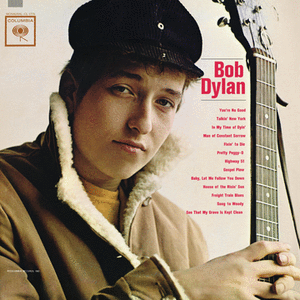 "Lyrical gymnastics" would best describe what John delivers in the verses. The hard “I” sound is heard an astonishing seventeen times in the first verse and bridge, as evidenced in the line “I get high when I see you go by…my, oh, my…etc.” The same pattern is repeated in the second verse and bridge on the sound “ite,” which is heard eight times, starting with “Is it right that you and I should fight…every night?...etc.” Also apparent is the obvious inclusion of a drug reference in the very first line “I get high.” Bob Dylan may have misheard the lyrics in the bridge of “I Want To Hold Your Hand” as this phrase instead of “I can’t hide,” but this time they actually say it! "Lyrical gymnastics" would best describe what John delivers in the verses. The hard “I” sound is heard an astonishing seventeen times in the first verse and bridge, as evidenced in the line “I get high when I see you go by…my, oh, my…etc.” The same pattern is repeated in the second verse and bridge on the sound “ite,” which is heard eight times, starting with “Is it right that you and I should fight…every night?...etc.” Also apparent is the obvious inclusion of a drug reference in the very first line “I get high.” Bob Dylan may have misheard the lyrics in the bridge of “I Want To Hold Your Hand” as this phrase instead of “I can’t hide,” but this time they actually say it!
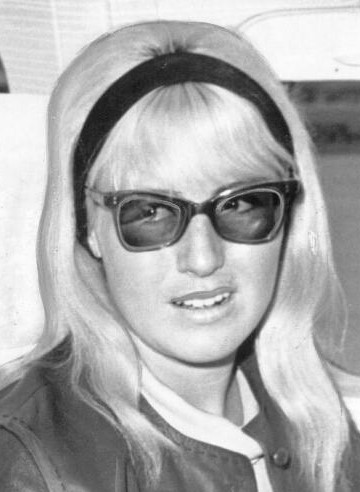 It’s obvious that cleverness outshone meaning when it came to writing this song. The first verse depicts the “butterflies” that you feel when you see that special someone “go by.” The innocence of a beginning love affair switches gears suddenly at the end of the chorus when John sings “it’s so hard loving you.” All of a sudden, the singer and his girl are fighting “every night” about something he’s done, which is indicated by him demanding “the right to make it up” to her. One can't help but think of his strained marriage with Cynthia at the time. It’s obvious that cleverness outshone meaning when it came to writing this song. The first verse depicts the “butterflies” that you feel when you see that special someone “go by.” The innocence of a beginning love affair switches gears suddenly at the end of the chorus when John sings “it’s so hard loving you.” All of a sudden, the singer and his girl are fighting “every night” about something he’s done, which is indicated by him demanding “the right to make it up” to her. One can't help but think of his strained marriage with Cynthia at the time.
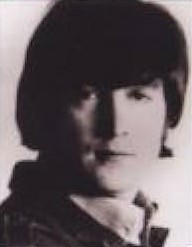 But, after all, “it’s only love” anyway. John can’t help reminding us that this is just another song about the same cliché they’ve been singing about for the past three years. Oddly enough, even for a song that appears to have been thrown together quickly as an album track, it still comes across convincingly, warts and all. But, after all, “it’s only love” anyway. John can’t help reminding us that this is just another song about the same cliché they’ve been singing about for the past three years. Oddly enough, even for a song that appears to have been thrown together quickly as an album track, it still comes across convincingly, warts and all.
American Releases
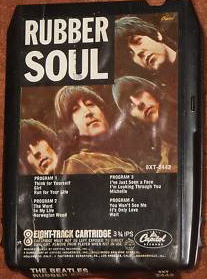 While the UK got to hear “It’s Only Love” on August 6th, 1965 as an album track on their version of “Help!,” America had to wait exactly four months to hear it as the first song on side two of the US “Rubber Soul” album, which was released on December 6th of that year. Opening side two turned out to be a fitting position for the song, being that a good amount of attention was heaped upon it. Being followed by John’s introspective “Girl” displayed the progression his songwriting underwent within a short period of time. Capitol's version of "Rubber Soul" was released on an individual compact disc on January 21st, 2014, both the mono and stereo versions of the album contained on a single CD. While the UK got to hear “It’s Only Love” on August 6th, 1965 as an album track on their version of “Help!,” America had to wait exactly four months to hear it as the first song on side two of the US “Rubber Soul” album, which was released on December 6th of that year. Opening side two turned out to be a fitting position for the song, being that a good amount of attention was heaped upon it. Being followed by John’s introspective “Girl” displayed the progression his songwriting underwent within a short period of time. Capitol's version of "Rubber Soul" was released on an individual compact disc on January 21st, 2014, both the mono and stereo versions of the album contained on a single CD.
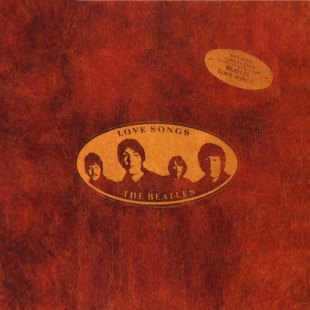 While the song wasn’t popular enough to make it onto either of the double-album compilations of 1973, it fit perfectly onto the October 21st, 1977 released album “Love Songs.” Since the lead vocals happened to be already centered in the 1965 stereo mix, no additional tweaking was required to get it up to speed like that done with other tracks on the album, such as “Michelle” and “Norwegian Wood." While the song wasn’t popular enough to make it onto either of the double-album compilations of 1973, it fit perfectly onto the October 21st, 1977 released album “Love Songs.” Since the lead vocals happened to be already centered in the 1965 stereo mix, no additional tweaking was required to get it up to speed like that done with other tracks on the album, such as “Michelle” and “Norwegian Wood."
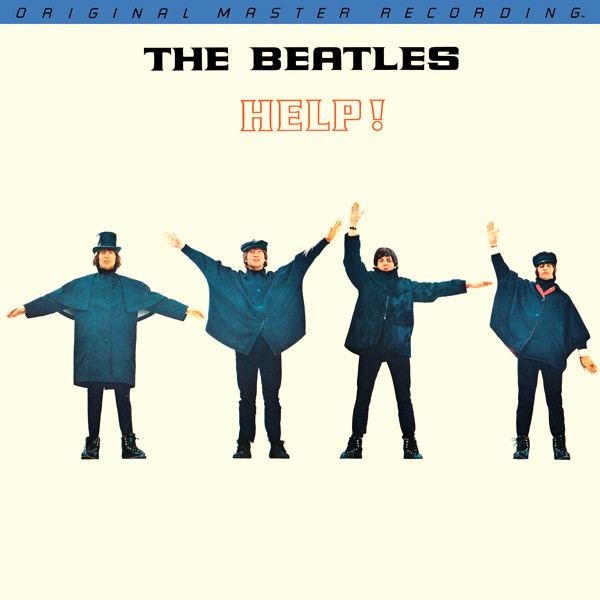 The first time the original British "Help!" album was made available in the US was the "Original Master Recording" vinyl edition released through Mobile Fidelity Sound Lab in January of 1986. This album included "It's Only Love" and was prepared utilizing half-speed mastering technology from the original master tape on loan from EMI. This version of the album was only available for a short time and is quite collectible today. The first time the original British "Help!" album was made available in the US was the "Original Master Recording" vinyl edition released through Mobile Fidelity Sound Lab in January of 1986. This album included "It's Only Love" and was prepared utilizing half-speed mastering technology from the original master tape on loan from EMI. This version of the album was only available for a short time and is quite collectible today.
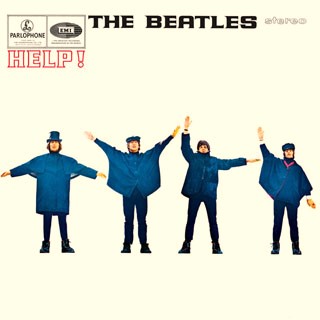 On April 30th, 1987, “It’s Only Love” was included on the first compact disc release of the “Help!” album, the vinyl edition coming out on July 21st, 1987. The new stereo mix made by George Martin in 1986 appears on both of these releases, as it continues to do on its remastered CD version as released on September 9th, 2009, the vinyl equivalent coming out on November 13th, 2012. On April 30th, 1987, “It’s Only Love” was included on the first compact disc release of the “Help!” album, the vinyl edition coming out on July 21st, 1987. The new stereo mix made by George Martin in 1986 appears on both of these releases, as it continues to do on its remastered CD version as released on September 9th, 2009, the vinyl equivalent coming out on November 13th, 2012.
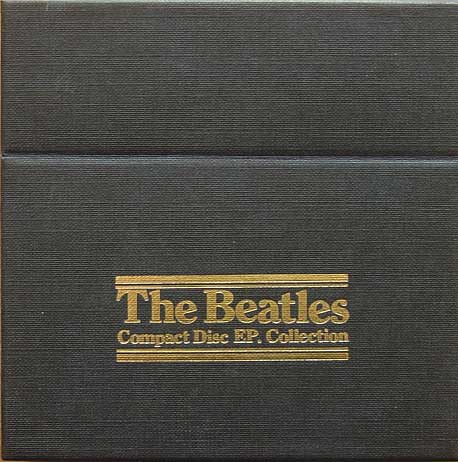 The original mono version of the song got its first CD release on the box set “Compact Disc EP Collection.” Its inclusion in this set was due to its being one of four tracks on the British “Yesterday” EP of 1966. This CD set was released in the US on June 30th, 1992. The original mono version of the song got its first CD release on the box set “Compact Disc EP Collection.” Its inclusion in this set was due to its being one of four tracks on the British “Yesterday” EP of 1966. This CD set was released in the US on June 30th, 1992.
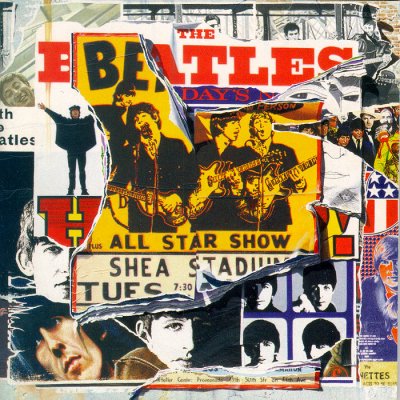 The highly anticipated “Anthology 2” compilation album was released on March 18th, 1996, which included an excellent never-before-heard studio version of “It’s Only Love.” After hearing the quick false start of “take three,” the full “take two” rhythm track from the June 15th, 1965 session is heard in its entirety. John’s enthusiastic vocal delivery, as well as the vibrant dual acoustic guitar arrangement and ending cymbal crash, made this version of song a shoe-in for inclusion on this collection. The highly anticipated “Anthology 2” compilation album was released on March 18th, 1996, which included an excellent never-before-heard studio version of “It’s Only Love.” After hearing the quick false start of “take three,” the full “take two” rhythm track from the June 15th, 1965 session is heard in its entirety. John’s enthusiastic vocal delivery, as well as the vibrant dual acoustic guitar arrangement and ending cymbal crash, made this version of song a shoe-in for inclusion on this collection.
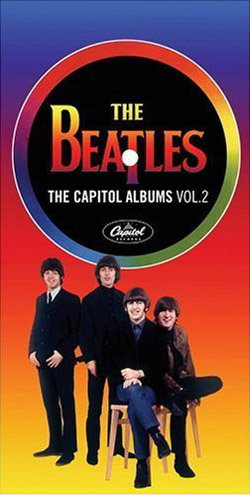 On April 11th, 2006, Capitol saw fit to release the second in their series of box sets entitled “The Capitol Albums, Vol. 2,” which included the entire American “Rubber Soul” album in both stereo and mono. The original stereo mix with the edited double-tracking is contained therein, and although early copies of this box set accidentally do not include the original mono mix, it is extremely hard to tell on this song. On April 11th, 2006, Capitol saw fit to release the second in their series of box sets entitled “The Capitol Albums, Vol. 2,” which included the entire American “Rubber Soul” album in both stereo and mono. The original stereo mix with the edited double-tracking is contained therein, and although early copies of this box set accidentally do not include the original mono mix, it is extremely hard to tell on this song.
If you desire to own those original 1965 mixes on CD, your best bet is to own the box set “The Beatles In Mono,” which includes the entire British “Help!” album in both mono and stereo as they were originally released in the '60s. The vinyl edition of this box set was first released on September 9th, 2014.
Live Performances
Unfortunately, there’s nothing to say here since The Beatles never intended to perform this song live. As loved as the song is today, they viewed it at the time as a “filler song,” as Paul himself described it.
Conclusion
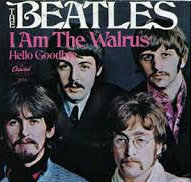 For what became the very last time in his songwriting career with The Beatles, Lennon resorted to, as he once stated it, “projecting myself into a situation.” “It’s Only Love,” despite its beauty and elegance, was primarily a manufactured pop song that was made-to-order for fulfilling the fourteen song requirement on the “Help!” album. From this point onward, John’s lyrics would either have surprising bite (“Run For Your Life”), wit (“Norwegian Wood”), self-expression (“Nowhere Man”) or just plain nonsense (“I Am The Walrus”). In fact, whenever Lennon touched pen to paper after this point, the result was anything but the standard pop song. He never failed to surprise. But for one last time, John (with a little help from Paul) churned one out in a similar fashion to what had been their trademark for the last five years – the stereotypical pop song. For what became the very last time in his songwriting career with The Beatles, Lennon resorted to, as he once stated it, “projecting myself into a situation.” “It’s Only Love,” despite its beauty and elegance, was primarily a manufactured pop song that was made-to-order for fulfilling the fourteen song requirement on the “Help!” album. From this point onward, John’s lyrics would either have surprising bite (“Run For Your Life”), wit (“Norwegian Wood”), self-expression (“Nowhere Man”) or just plain nonsense (“I Am The Walrus”). In fact, whenever Lennon touched pen to paper after this point, the result was anything but the standard pop song. He never failed to surprise. But for one last time, John (with a little help from Paul) churned one out in a similar fashion to what had been their trademark for the last five years – the stereotypical pop song.
Song Summary
"It’s Only Love”
Written by: John Lennon / Paul McCartney
-
Song Written: May to June, 1965
-
Song Recorded: June 15, 1965
-
First US Release Date: December 6, 1965
-
-
US Single Release: n/a
-
Highest Chart Position: n/a
-
British Album Release: Parlophone #PCS 3071 “Help!”
-
Length:1:53
-
Key: C major
-
Producer: George Martin
-
Engineers:Norman Smith, Phil McDonald
Instrumentation (most likely):
-
John Lennon - Lead Vocals, Rhythm Guitars (1964 Framus Hootenanny 5/024 acoustic 12-string and 1964 Rickenbacker 325)
-
George Harrison – Lead Guitar (1963 Gretsch 6119 Tennessean), Rhythm Guitar (1962 Gibson J-160E)
-
Paul McCartney - Bass Guitar (1963 Hofner 500/1)
-
Ringo Starr – Drums (1964 Ludwig Super Classic Black Oyster Pearl), tambourine
Written and compiled by Dave Rybaczewski
|
IF YOU WOULD LIKE TO MAKE A DONATION TO KEEP THIS WEBSITE UP AND RUNNING, PLEASE CLICK BELOW!
Sign Up Below for our MONTHLY BEATLES TRIVIA QUIZ!
|